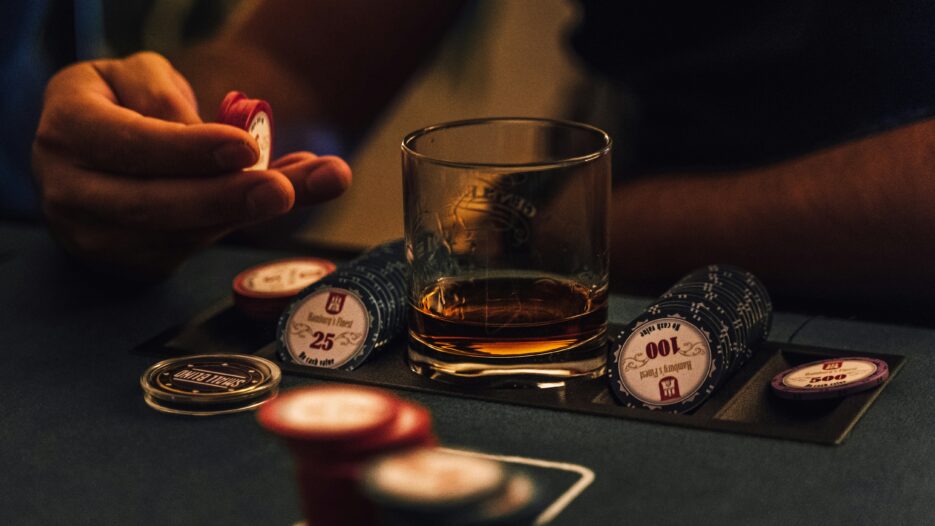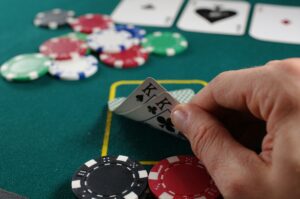
Table of Contents
Winning at poker isn’t only about having good cards—it’s about recognizing who you’re up against and using their habits against them. Weak players, often called “recreational” or “loose-passive” players, are the backbone of profitable games. They make predictable mistakes that smart players can exploit for consistent gains.
This article breaks down how to identify weak players, the strategies that work best against them, and how to adjust your approach without crossing ethical lines.
Understanding Why Exploitation Works
Every poker player has tendencies. Strong players balance aggression and caution, while weak ones often lean too far in one direction—either calling too often or folding too easily. These predictable patterns create opportunities.
If a player calls everything, you make money by value-betting relentlessly. If they fold too much, you profit by bluffing strategically. Exploiting weak players means recognizing these patterns and reshaping your own play to maximize returns from their mistakes.
Common Types of Weak Players
Not all weak players are the same. Knowing which type you’re facing helps you choose the right strategy.
The Calling Station
Calls too often preflop and postflop
Rarely folds, even with marginal hands
Hates missing out on a pot
How to exploit: Stop bluffing and value-bet more often. Bet bigger with strong hands—they’ll call anyway.
The Nit (Overly Tight Player)
Plays very few hands
Folds easily under pressure
Waits for premium hands to get involved
How to exploit: Steal blinds frequently, raise often in position, and apply pressure on later streets. Bluff more against them—they fold far too often.
The Maniac
Plays too many hands aggressively
Raises and re-raises frequently
Relies on chaos rather than logic
How to exploit: Be patient and let them hang themselves. Call down lighter, trap with strong hands, and avoid unnecessary bluffs.
The Passive Postflop Player
Calls a lot preflop but slows down after the flop
Rarely raises or bluffs
Hopes to see cheap showdowns
How to exploit: Bet for value on every street with top pair or better. Avoid fancy check-raises—they won’t fold anyway.
Preflop Adjustments Against Weak Players

Preflop play sets up the entire hand. Small tweaks can make a big difference.
In position: Open your range slightly when you have a position on weak players. Raise to isolate limpers and get heads-up with them, where you can control the action.
Out of position: Tighten up. Weak players love calling raises, and it’s harder to extract value or bluff successfully without position.
3-betting: Go for value-heavy 3-bets against players who call too often. Against tight players, add selective bluff 3-bets—they’ll often fold.
Postflop Tactics for Maximum Value
Weak players usually misplay postflop situations. The key is to simplify your approach.
Value betting: Make straightforward bets with good hands. Against calling stations, don’t be afraid to bet big. Thin value bets on the turn and river add up fast.
Avoid excessive bluffing: Bluffing only works if your opponent folds. Against weak, curious players, focus instead on building value.
Bet sizing:
Versus callers: Smaller to medium bets (40–60% of pot) to keep them in the hand.
Versus tight players: Larger bets (60–100% of pot) to maximize fold equity.
Adapting by Opponent Type
You can’t use one strategy for every opponent. Adjust as follows:
Versus calling stations: Always bet your strong hands. Don’t slow-play—extract value before the board gets scary.
Versus tight players: Attack relentlessly. Steal blinds, continuation-bet often, and keep the pressure on.
Versus maniacs: Play trap poker. Let them do the betting and call with hands that can stand aggression.
Reading Table Dynamics

Weak players behave differently depending on the table atmosphere.
Early sessions: You’ll see more recreational players—maximize your exploitative play and loosen up in position.
Later sessions: As stronger players join, tighten up and return to balanced play.
Stack sizes: Deep stacks allow more postflop maneuvering and bigger value extractions. Short stacks mean less bluffing and more push/fold decisions.
Mistakes Players Make When Exploiting Others
Trying too hard to exploit can backfire. Avoid these common pitfalls:
Over-bluffing: Bluffing players who love to call just burn money.
Over-adjusting: Don’t abandon solid fundamentals entirely—balance still matters.
Emotional tilt: Don’t take weak players’ lucky wins personally. Patience beats frustration in the long run.
Practicing Exploitative Play
If you want to improve your exploitative skills, try short drills during practice sessions:
Value-bet drill: For 100 hands, bet every time you have top pair or better and review how often you were paid off.
Steal challenge: Attempt one blind steal from the button or cutoff per orbit and track how often it works.
Bet sizing test: Vary your sizing across different player types and record results.
Playing Ethically and Responsibly
Exploitation in poker is about strategy, not manipulation. Never collude or share information with others. Treat recreational players with respect—after all, they keep the games running. If someone appears to be gambling beyond their means, consider stepping back or encouraging responsible play.
Knowing When to Stop Exploiting
If you notice the table getting tougher, or players adjusting to your tactics, it’s time to change gears. Move back to balanced, theory-driven play. Exploitation works best in soft games, not against observant regulars.
Final Thoughts
Exploiting weak players in poker isn’t about outsmarting geniuses—it’s about staying disciplined and patient. Focus on extracting consistent value, making fewer mistakes, and reading the table accurately. Over time, you’ll find that steady, exploitative play delivers more profit than risky bluffs or fancy moves.

















